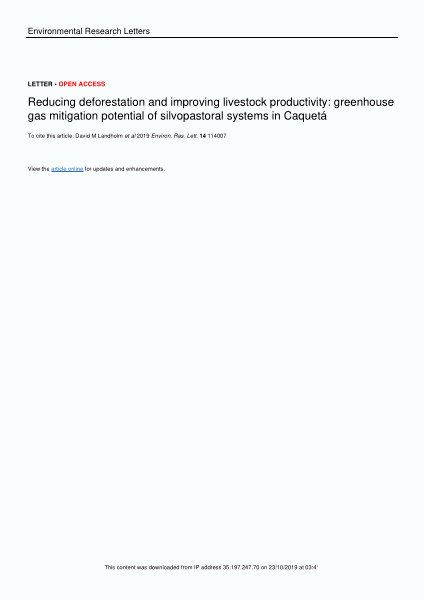Reducing deforestation and improving livestock productivity: greenhouse gas mitigation potential of silvopastoral systems in Caquetá
Colombiaʼs agriculture, forestry and other land use sector accounts for nearly half of its total
greenhouse gas (GHG) emissions. The importance of smallholder deforestation is comparatively high
in relation to its regional counterparts, and livestock agriculture represents the largest driver of
primary forest depletion. Silvopastoral systems (SPSs) are presented as agroecological solutions that
synergistically enhance livestock productivity, improve local farmers’ livelihoods and hold the
potential to reduce pressure on forest conversion. The department of Caquetá represents Colombia’s
most important deforestation hotspot. Targeting smallholder livestock farms through survey data, in
this work we investigate theGHGmitigation potential of implementing SPSs for smallholder farms in
this region. Specifically, we assess whether the carbon sequestration taking place in the soil and
biomass of SPSs is sufficient to offset the per-hectare increase in livestockGHGemissions resulting
from higher stocking rates. To address these questions we use data on livestock population
characteristics and historic land cover changes reported from a survey covering 158 farms and model
the carbon sequestration occurring in three different scenarios of progressively-increased SPS
complexity using theCO2 fix model.Wefind that, even with moderate tree planting densities, the
implementation of SPSs can reduceGHGemissions by 2.6MgCO2e ha−1 yr−1 in relation to current
practices, while increasing agriculture productivity and contributing to the restoration of severely
degraded landscapes.

